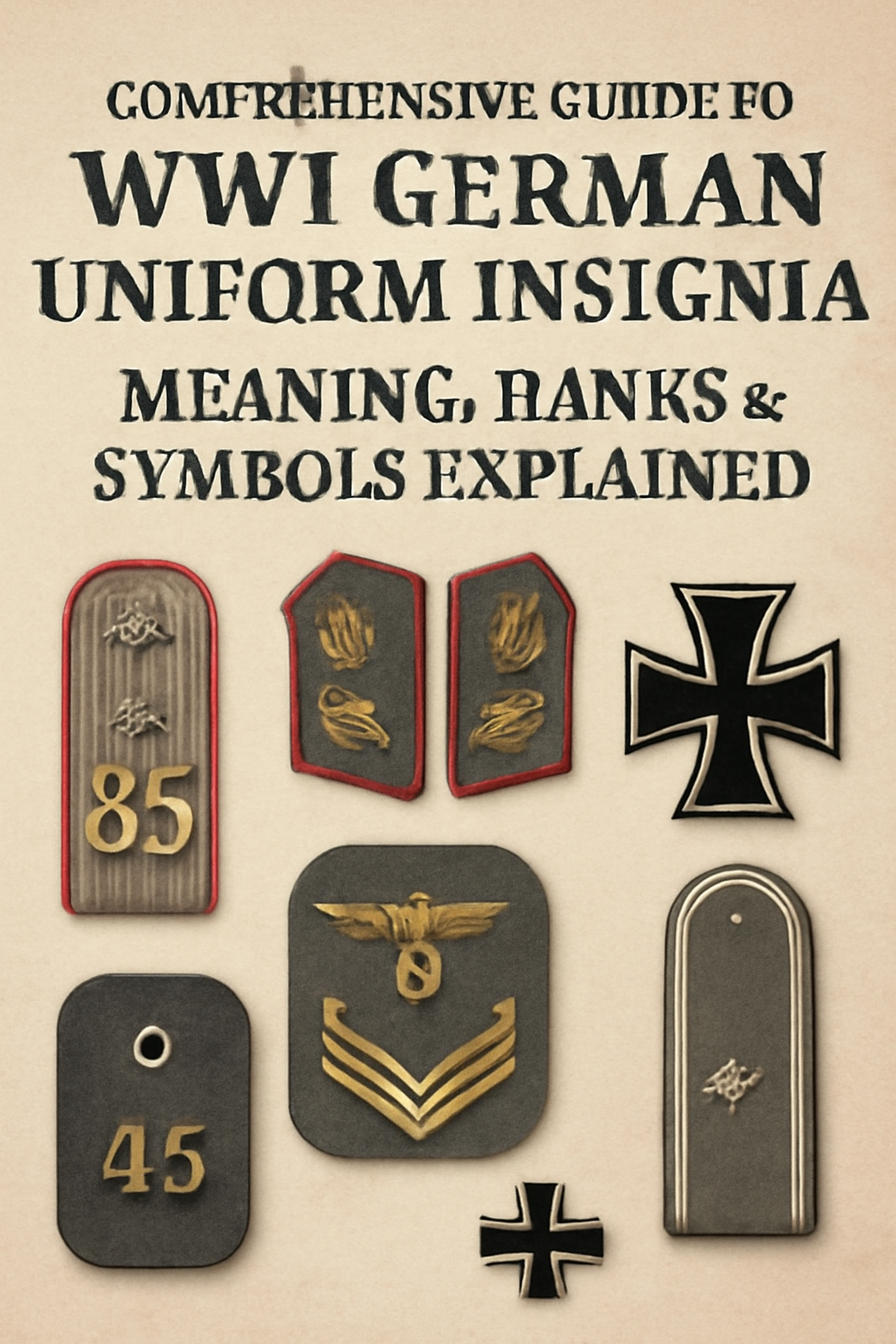
Comprehensive Guide to WW1 German Uniform Insignia | Meaning, Ranks & Symbols Explained
Published on May 28, 2025
WW1 German Uniform Insignia: A Detailed Guide to Symbols of Honor and Rank
Introduction
When it comes to military history, German uniforms from World War I (WW1) hold a unique place due to their distinct insignia and symbolism. These uniform insignia not only denoted rank and regiment but also embodied pride, honor, and the strict hierarchy of the German army. For collectors, reenactors, and history buffs visiting Paddelaters.com, understanding these insignia is key to appreciating the legacy of German soldiers during this tumultuous period.
In this article, we'll take a deep dive into the world of WW1 German uniform insignia, explore how they compare to German army insignia from WWII, and explain the significance of symbols such as the Iron Cross and the German cross symbol.
Understanding WW1 German Uniform Insignia
The Importance of Insignia in WW1
During WW1, German uniforms featured a variety of insignia to communicate rank, unit, and role. This helped maintain order and structure within the ranks. Insignia were carefully designed to reflect military tradition and could be found on collars, shoulder boards, and sleeves.
Key Components of WW1 German Insignia
- Shoulder Boards: Indicated rank and unit affiliation. Officers typically had more elaborate shoulder boards featuring braided cords or pips.
- Collar Tabs: Worn on the collar, these patches denoted the soldier’s regiment and branch, often using color coding to differentiate infantry, artillery, engineers, and more.
- Sleeve Insignia: Some units used sleeve patches to signify particular battalions or specialist roles.
- Helmet Decals: Though less prominent in WW1, some helmets displayed unit or national insignia, including the famous Balkenkreuz (German cross symbol).
Pillar Page Link: German Army Insignia
For those fascinated by the broader evolution of German military insignia, it’s worth exploring how WW1 symbols influenced later designs. Our comprehensive pillar page on German Army Insignia details these changes, including how rank markings and patches adapted during the interwar period and WWII.
The Legacy of WW1 Insignia in WWII German Patches
Many WW2 German patches and insignia trace their origins back to WW1. The organizational structure and symbolism remained consistent but evolved in style and complexity.
- WWII German Patches: These often featured more elaborate designs and were used to represent a wider range of military branches, including the Waffen-SS and Luftwaffe.
- Rank Structure: While WW1 ranks set the foundation, WWII ranks introduced more variations, as detailed in our pillar page on German Army WWII Ranks.
What Does the Iron Cross Symbolize?
One of the most famous German military decorations, the Iron Cross, carries deep symbolism.
- History: Originally instituted in 1813 by King Frederick William III of Prussia, the Iron Cross was revived during WW1 and again in WWII.
- Symbolism: It represents bravery, military honor, and the willingness to sacrifice for the nation.
- Design: The cross’s distinctive black-and-white pattern is instantly recognizable and often appears on helmets, medals, and insignia.
- Controversy: While a symbol of valor, it is sometimes misunderstood due to its later association with Nazi Germany.
Learn more about the Iron Cross and its significance on our detailed page dedicated to this emblem.
The German Cross Symbol: Beyond the Iron Cross
In addition to the Iron Cross, the German Cross Symbol (Balkenkreuz) was a widely used national emblem on military vehicles and uniforms.
- Use: It served as a quick identifier of German forces, painted on tanks, aircraft, and uniforms.
- Design: A black cross with white borders, it emphasized national pride and military unity.
- WW1 vs. WWII: The symbol originated in WW1 and was adapted with slight variations during WWII.
Collecting and Authenticating WW1 German Uniform Insignia
For collectors and reenactors, authenticity is paramount.
- Materials: Original WW1 insignia were made from wool, metal, and embroidered threads, often showing wear from the battlefield.
- Common Fakes: Beware of reproductions that may appear authentic but lack the historical materials or craftsmanship.
- Tips: Consult reputable dealers and use guides like those provided on Paddelaters.com to verify patches and insignia.
Why Are WW1 German Uniform Insignia Still Relevant?
Despite being over a century old, WW1 German uniform insignia remain significant for several reasons:
- Historical Value: They provide insight into military traditions and the evolution of warfare.
- Cultural Significance: Represent a pivotal period in German and world history.
- Collectibility: Highly sought after by collectors for their rarity and craftsmanship.
- Educational Purposes: Useful in museums, reenactments, and academic research.
Conclusion
WW1 German uniform insignia are more than just decorative patches or rank markers—they tell a story of discipline, honor, and the complex history of the German military. Whether you’re a collector, historian, or enthusiast, understanding these insignia opens a window into the past and connects us with the soldiers who wore them.
To explore more about German military history, including WWII German patches and detailed explanations of rank insignia, visit our dedicated pillar pages and shop for authentic items on Paddelaters.com.
